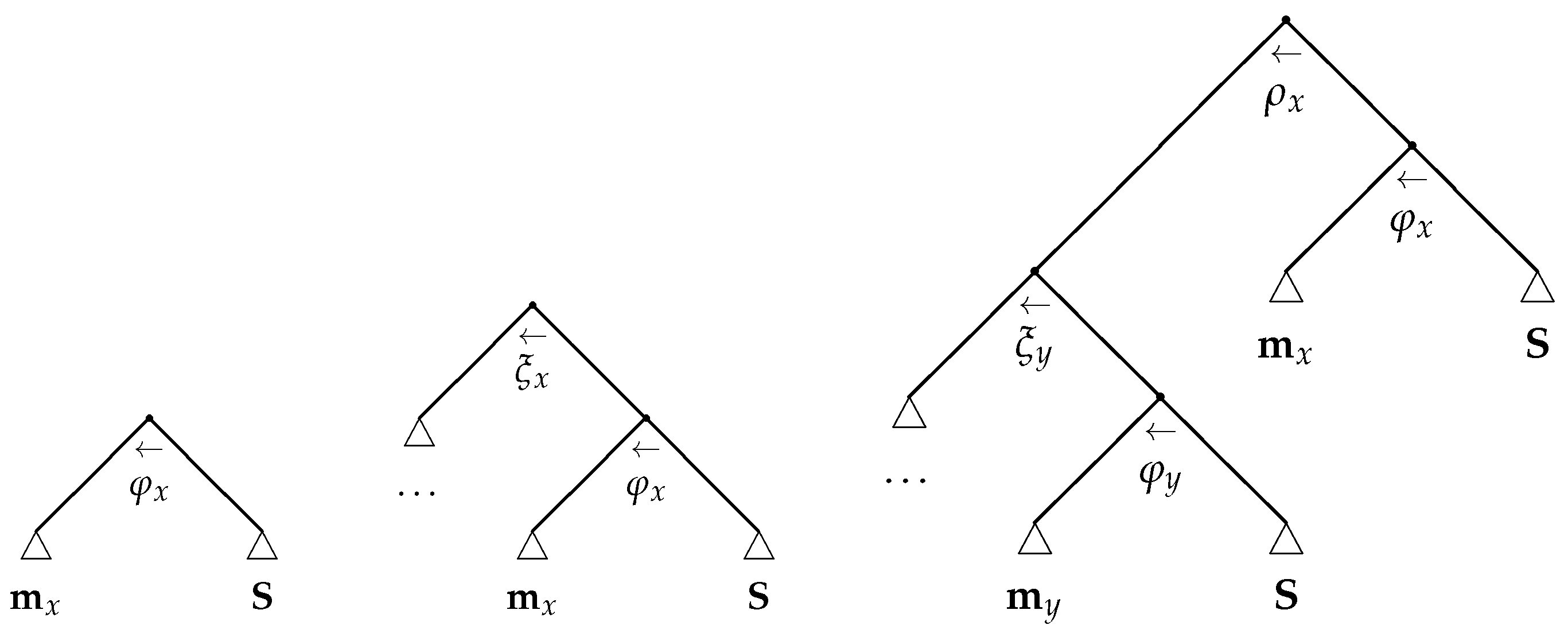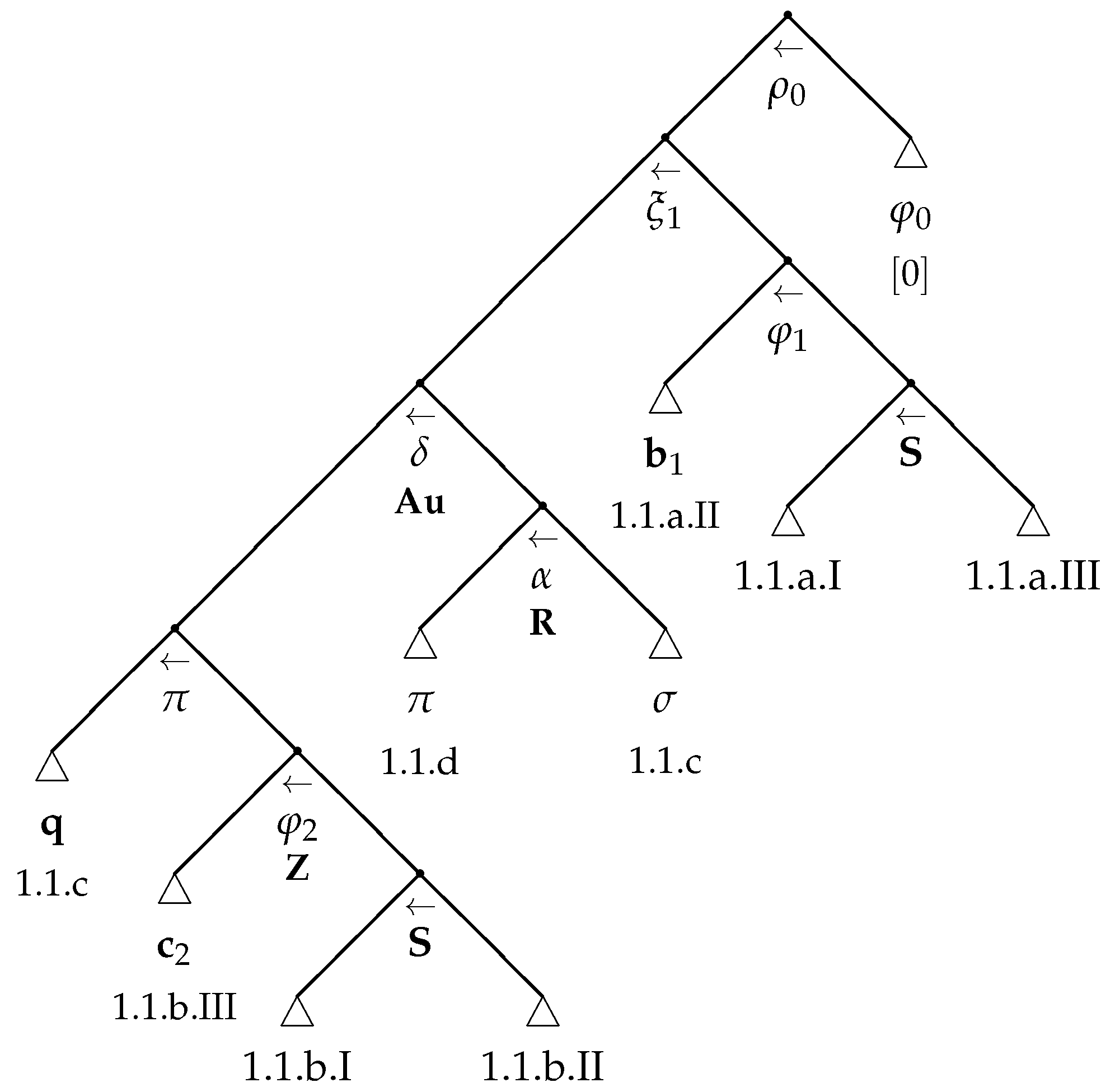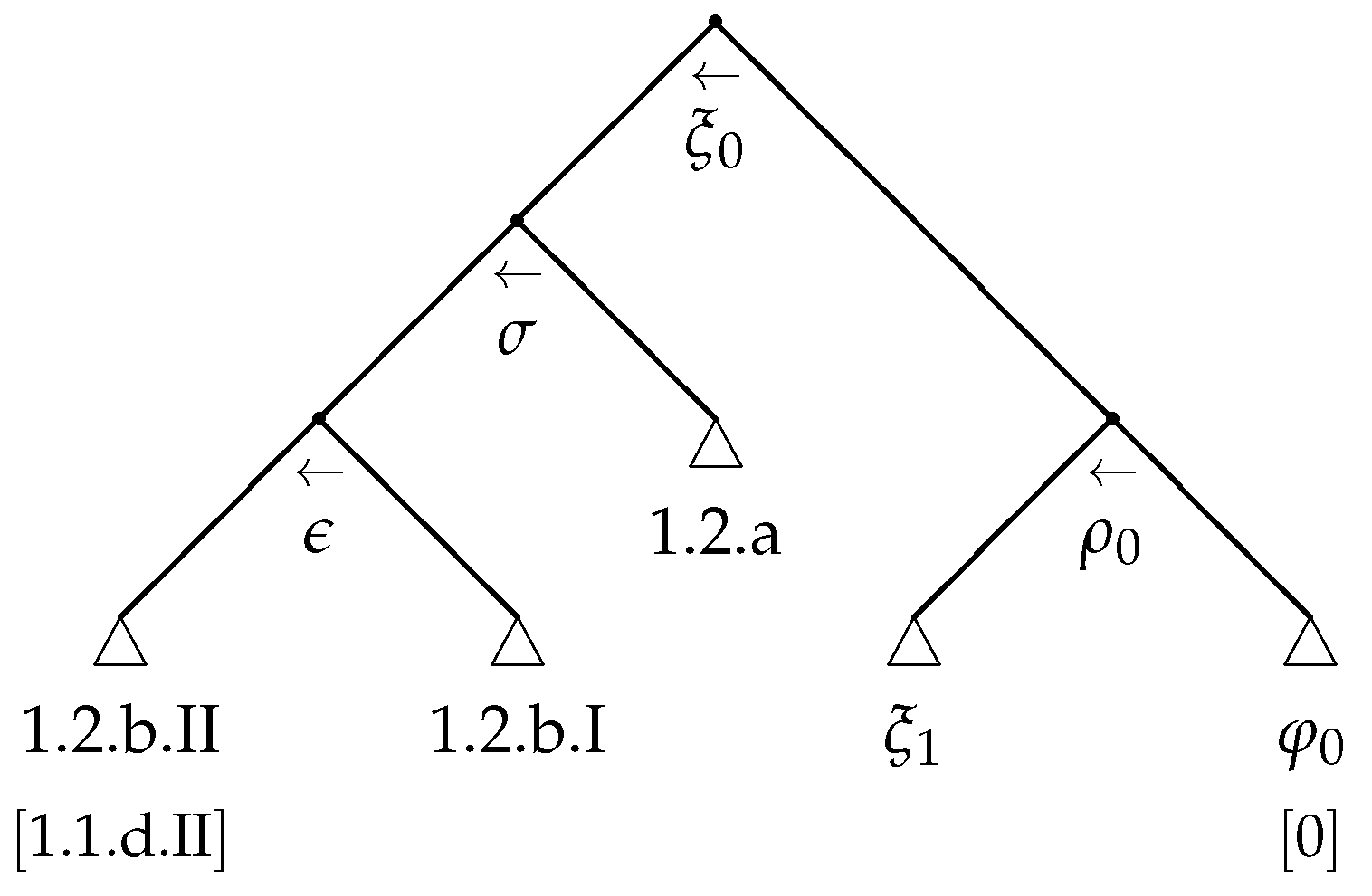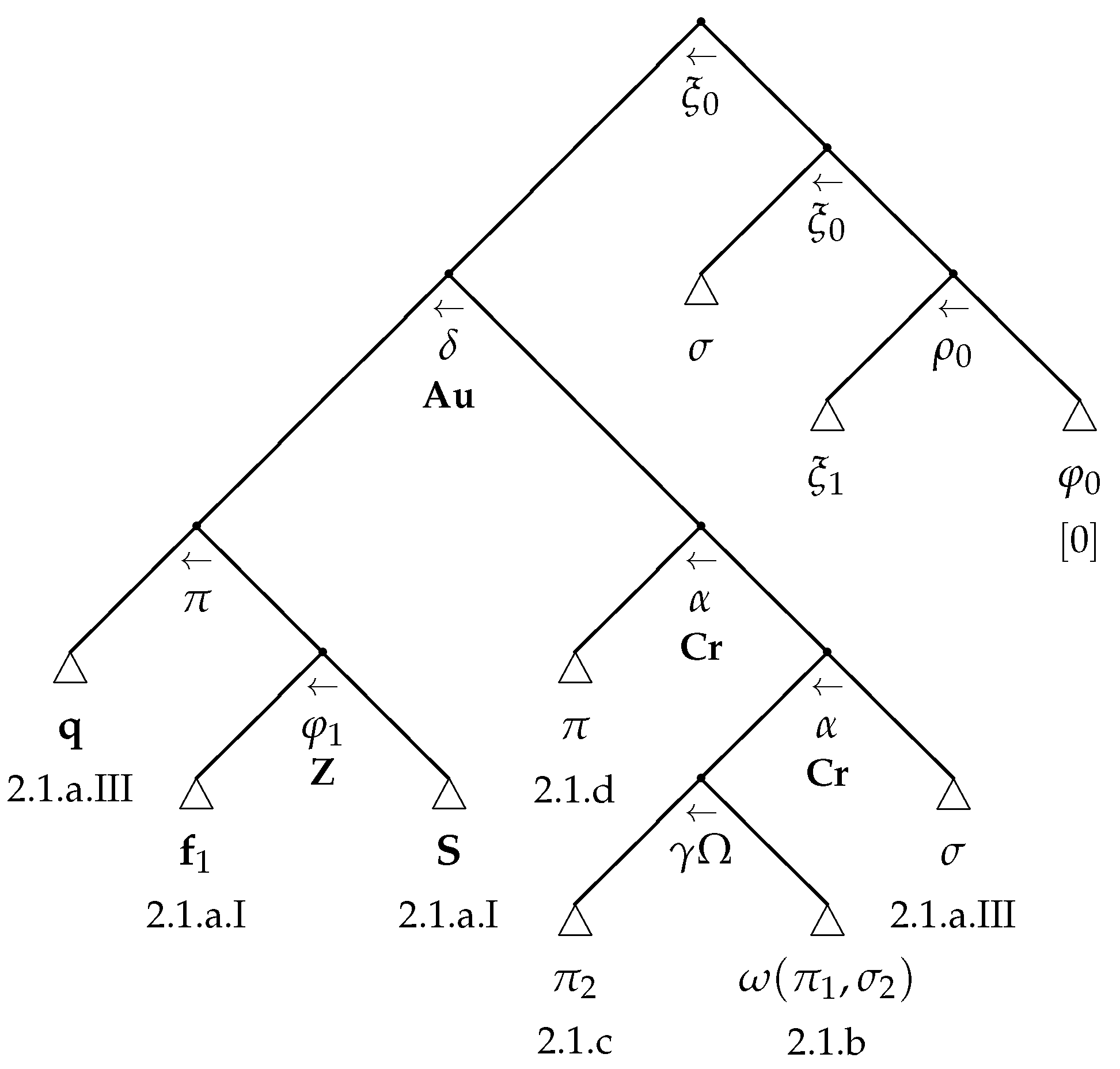More than Relata Refero: Representing the Various Roles of Reported Speech in Argumentative Discourse
Abstract
1. Introduction
2. The Concept of Voice in Adpositional Argumentation
3. An Analysis of Voices in the Copernicus Plagiarism Case
3.1. Presentation of the Exemplary Text and Its Argumentative Fabric
In his article “Plagiarism: A rich tradition in science”, editor John Lowell argues, referring to an article by dr. P. Smith, that Copernicus was also guilty of plagiarism: it appears that he “forgot” to mention that Aristarchos of Samos (310–230 BC) had already arrived at a heliocentric theory. It is, however, doubtful that Copernicus knew of this.
Kant spoke of heliocentricity as a Copernican revolution: it is directly contrary to “common sense” (after all, we can see that the sun rises in the east and sets in the west), and more importantly, to a centuries-old geocentric, Christian-scientific tradition. Copernicus needed all the support he could muster for his theory, and cited a great many classical writers to that end.
The fact that Copernicus did not refer to Aristarchos is not easy to understand, if he had, indeed, known him to be the intellectual author of heliocentricity. However, the best source for Aristarchos’ theory was Archimedes’ Sand reckoner, which did not “appear” until 1544, a year after Copernicus’ death. Another source, in which Aristarchos is vaguely cited, was possibly only consulted by Copernicus after he had already announced his hypothesis.
In conclusion, it can be said that the accusation that Copernicus committed plagiarism is at the very least doubtful and is probably incorrect. In order to avoid being justly accused of something similar, I will mention now that my most important source was: O. Gingerich, “Did Copernicus owe a debt to Aristarchos?” in Journal for the History of Astronomy 16, 1985.
3.2. A Representation of the First Three Sentences in Argumentative Adpositional Trees
| [0] [the author writes] 1.1.a.I In his article “Plagiarism: A rich tradition in science”, 1.1.a.II editor John Lowell 1.1.a.III argues, 1.1.b.I referring 1.1.b.II to an article 1.1.b.III by dr. P. Smith, 1.1.c that Copernicus was also guilty of plagiarism: 1.1.d.I it appears that he “forgot” to mention 1.1.d.II that Aristarchos of Samos (310–230 BC) had already arrived at a heliocentric theory. |
| [0] [the author writes] 1.2.a It is, however, doubtful 1.2.b.I that Copernicus knew of 1.2.b.II this [anaphora of 1.1.d.II]. |
| [0] [the author writes] 2.1.a.I Kant 2.1.a.II spoke of 2.1.a.III heliocentricity as a Copernican revolution: 2.1.b it is directly contrary to “common sense” 2.1.c (after all, we can see that the sun rises in the east and sets in the west) 2.1.d and more importantly, to a centuries old geocentric, Christian scientific tradition. |
4. Conclusions
Author Contributions
Funding
Institutional Review Board Statement
Informed Consent Statement
Data Availability Statement
Acknowledgments
Conflicts of Interest
Appendix A
| Symbol | Meaning |
|---|---|
| voice | |
| S | voice predication |
| m | voice entity |
| reported speech by x | |
| viewpoint by the voice indicated by x | |
| linguistic-syntactic information | |
| statement function (respectively ‘conclusion’ and ‘premise’) | |
| argument form | |
| Omega-transformation | |
| statement with double function (‘conclusion’ and ‘premise’) | |
| Δ | hidden subtree |
| q | subject of a Gamma or Delta argument |
| Z | predicate of a Delta argument |
| Au | argument from authority |
| Cr | argument from criterion |
| R | argument from requirement |
| 1 | The denotes who () is reporting what (the tree with root ), in which context (the tree with root ). |
| 2 | The Greek letter denotes the Greek phoonè, meaning ‘voice’, whereas the Greek letter denotes the Greek xagnanto, meaning ‘viewpoint’. Finally, the Greek letter refers to the Latin expression relata refero. |
| 3 | It is even possible to find the same voice entity (e.g., Kant) in two different voices at different distances; this is why the double indexing counts as a unique identifier of the voice. |
References
- Aakhus, Mark, and Marcin Lewiński. 2021. Argumentation in Complex Communication. Managing Disagreement in a Polylogue. Cambridge: Cambridge University Press. [Google Scholar]
- Aikin, Scott F., and John Casey. 2022. Straw Man Arguments: A Study in Fallacy Theory. London: Bloomsbury Publishing. [Google Scholar]
- Burke, Kenneth. 1941. Four master tropes. The Kenyon Review 3: 421–38. [Google Scholar]
- Floridi, Luciano. 2011. The Philosophy of Information. Oxford: Oxford University Press. [Google Scholar]
- Freeman, James B. 2011. Argument Structure: Representation and Theory. Dordrecht, Heidelberg, London and New York: Springer. [Google Scholar]
- Gobbo, Federico, and Marco Benini. 2011. Constructive Adpositional Grammars: Foundations of Constructive Linguistics. Cambridge: Cambridge Scholars Publishing. [Google Scholar]
- Gobbo, Federico, Marco Benini, and Jean H. M. Wagemans. 2019. Annotation with adpositional argumentation: Guidelines for building a gold standard corpus of argumentative discourse. Intelligenza Artificiale 13: 155–72. [Google Scholar] [CrossRef]
- Gobbo, Federico, Marco Benini, and Jean H. M. Wagemans. 2021. Complex Arguments in Adpositional Argumentation. In AI⌃3 2021 Advances in Argumentation in Artificial Intelligence—Proceedings of the 5th Workshop on Advances in Argumentation in Artificial Intelligence 2021 Co-Located with the 20th International Conference of the Italian Association for Artificial Intelligence (AIxIA 2021). Edited by Marcello D’Agostino, Fabio A. D’Asaro and Costanza Larese. Aachen: CEUR Workshop Proceedings, vol. 3086. [Google Scholar]
- Goodwin, Jean. 1998. Forms of authority and the real ad verecundiam. Argumentation 12: 267–80. [Google Scholar] [CrossRef]
- Govier, Trudy. 2018. Problems in Argument Analysis and Evaluation. Windsor: Windsor Studies in Argumentation. [Google Scholar]
- Gregoriou, Christiana. 2014. Voice. In The Cambridge Handbook of Stylistics. Edited by Peter Stockwell and Sara Whiteley. Cambridge: Cambridge University Press, pp. 165–78. [Google Scholar]
- Hoffmann, Christian R. 2017. Narrative perspectives on voice in fiction. In Pragmatics of Fiction. Edited by Miriam A. Locher and Andreas H. Jucker. Berlin and Boston: De Gruyter, pp. 159–95. [Google Scholar]
- Hoppmann, Michael J. 2021. Reasonable Reconstruction of Socratic Irony in Public Discourse. Argumentation 2021: 1–21. [Google Scholar] [CrossRef]
- Langacker, Ronald W. 1987. Foundations of Cognitive Grammar: Theoretical Prerequisites. Redwood City: Stanford University Press, vol. 1. [Google Scholar]
- Lausberg, Heinrich. 1949. Elemente der Literarischen Rhetorik. Ismaning bei München: Max Hueber Verlag. [Google Scholar]
- Lausberg, Heinrich. 1960. Handbuch der Literarischen Rhetorik. Ismaning bei München: Max Hueber Verlag. [Google Scholar]
- Lewiński, Marcin, and Steve Oswald. 2013. When and how do we deal with straw men? A normative and cognitive pragmatic account. Journal of Pragmatics 59: 164–77. [Google Scholar] [CrossRef]
- Searle, John R. 2010. Making the Social World: The Structure of Human Civilization. Oxford: Oxford University Press. [Google Scholar]
- Snoeck, Henkemans, and A. Francisca. 1992. Analysing Complex Argumentation: The Reconstruction of Multiple and Coordinatively Compound Argumentation in a Critical Discussion, 1st ed. Amsterdam: Sic Sat. [Google Scholar]
- van Eemeren, Frans H., Bart J. Garssen, Erik C. W. Krabbe, A. Francisca Snoeck Henkemans, H. Bart Verheij, and Jean H. M. Wagemans. 2014. Handbook of Argumentation Theory, 1st ed. Dordrecht: Springer. [Google Scholar]
- van Eemeren, Frans H., Rob Grootendorst, and A. Francisca Snoeck Henkemans. 2002. Argumentation: Analysis and Evaluation. Mahwah, NJ: Lawrence Erlbaum. [Google Scholar]
- Wagemans, Jean H. M. 2011. The assessment of argumentation from expert opinion. Argumentation 25: 329–39. [Google Scholar] [CrossRef]
- Wagemans, Jean H. M. 2016. Constructing a Periodic Table of Arguments. In Argumentation, Objectivity, and Bias: Proceedings of the 11th International Conference of the Ontario Society for the Study of Argumentation. Edited by Pat Bondy and Laura Benacquista. Windsor: OSSA, pp. 1–12. [Google Scholar]
- Wagemans, Jean H. M. 2019. Four basic argument forms. Research in Language 17: 57–69. [Google Scholar] [CrossRef][Green Version]
- Walton, Douglas, and Marcin Koszowy. 2017. Arguments from authority and expert opinion in computational argumentation systems. AI & Society 32: 483–96. [Google Scholar]




| Entity Label | Voice Entity | Voice Predication |
|---|---|---|
| a | [author] | [writes] |
| b | editor John Lowell | referring |
| c | dr. P. Smith | argues |
| d | Copernicus | “forgot” to mention |
| e | Aristarchos | arrived at |
| Entity Label | Voice Entity | Voice Predication |
|---|---|---|
| f | Kant | spoke of |
Publisher’s Note: MDPI stays neutral with regard to jurisdictional claims in published maps and institutional affiliations. |
© 2022 by the authors. Licensee MDPI, Basel, Switzerland. This article is an open access article distributed under the terms and conditions of the Creative Commons Attribution (CC BY) license (https://creativecommons.org/licenses/by/4.0/).
Share and Cite
Gobbo, F.; Benini, M.; Wagemans, J.H.M. More than Relata Refero: Representing the Various Roles of Reported Speech in Argumentative Discourse. Languages 2022, 7, 59. https://doi.org/10.3390/languages7010059
Gobbo F, Benini M, Wagemans JHM. More than Relata Refero: Representing the Various Roles of Reported Speech in Argumentative Discourse. Languages. 2022; 7(1):59. https://doi.org/10.3390/languages7010059
Chicago/Turabian StyleGobbo, Federico, Marco Benini, and Jean H. M. Wagemans. 2022. "More than Relata Refero: Representing the Various Roles of Reported Speech in Argumentative Discourse" Languages 7, no. 1: 59. https://doi.org/10.3390/languages7010059
APA StyleGobbo, F., Benini, M., & Wagemans, J. H. M. (2022). More than Relata Refero: Representing the Various Roles of Reported Speech in Argumentative Discourse. Languages, 7(1), 59. https://doi.org/10.3390/languages7010059







